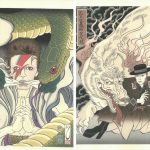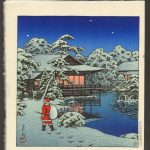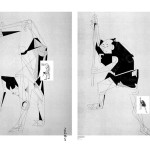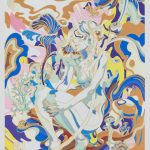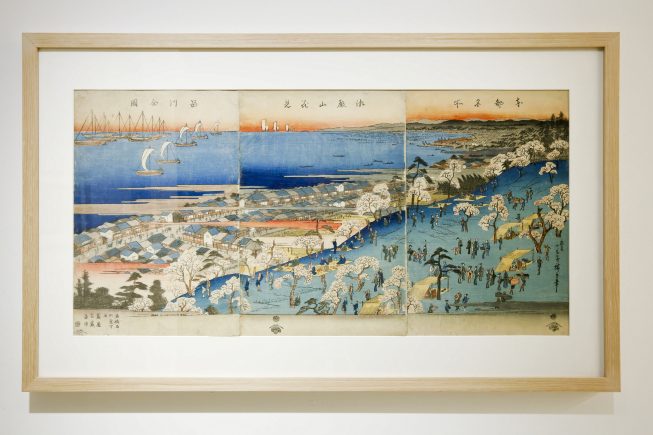
Utagawa Hiroshige, “Cherry Blossom Viewing at Mount Goten” (c.1832–1855)
The Japanese have long revered their natural landscape. Its beauty has been a central focus in Japanese culture as has its power. All rooted in the belief that supernatural forces and beings—from ghosts to shape-shifting animals to trickster spirits—inhabit and influence the natural realm. These ideas are vividly portrayed through the woodblock prints on display in a new exhibition at JAPAN HOUSE Los Angeles, “Nature/Supernature – Visions of this World and Beyond in Japanese Woodblock Prints.”
For centuries, Japanese artists have illustrated these themes, reaching new heights in the Edo (1603–1868) and Meiji (1868–1912) eras with the rise of woodblock printing. Step into the sub-gallery—virtually, from the safety and comfort of your own home—and you’ll experience the history and process of Japanese woodblock printing, the world’s first form of “mass media.” Very early examples of printed images as well as woodblocks, tools, and pigments set the stage for the evolution to come.

JAPAN HOUSE Los Angeles gallery featuring the NATURE/SUPERNATURE exhibition
Enter into the main gallery, where a collection of more than 60 prints from the Scripps College collection in Claremont, CA, vividly illustrate Japan’s varied landscapes and changing seasons. From rich, green forests and majestic mountains to scenic waterways and sacred temples, these colorful woodblock prints, created by celebrated artists including Katsushika Hokusai (1760-1849) and Utagawa Hiroshige (1797-1858), will transport you. Continue on to the second half of the main gallery, where nature’s supernatural influences take center stage, with artists’ depictions of forces that can be both benign and bountiful or angry and destructive. Many of the prints here depict scenes from well-known Japanese folk tales or legends, featuring kami, yōkai, and beings, spirits, and demons in between. Immerse yourself in “Nature/Supernature,” and come away with a deeper understanding of Japan’s singular natural environment and some of the ancient beliefs that continue to inform Japanese culture today.
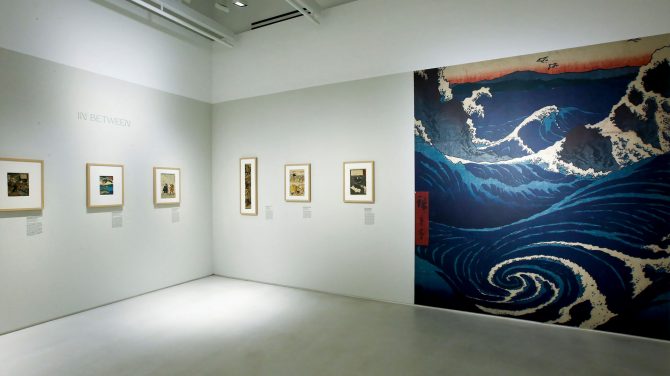
Whirlpools and Waves at Naruto, Awa Province, No. 55 in the series Famous Views of the Sixty-odd Provinces by Utagawa Hiroshige, c. 1853-1856
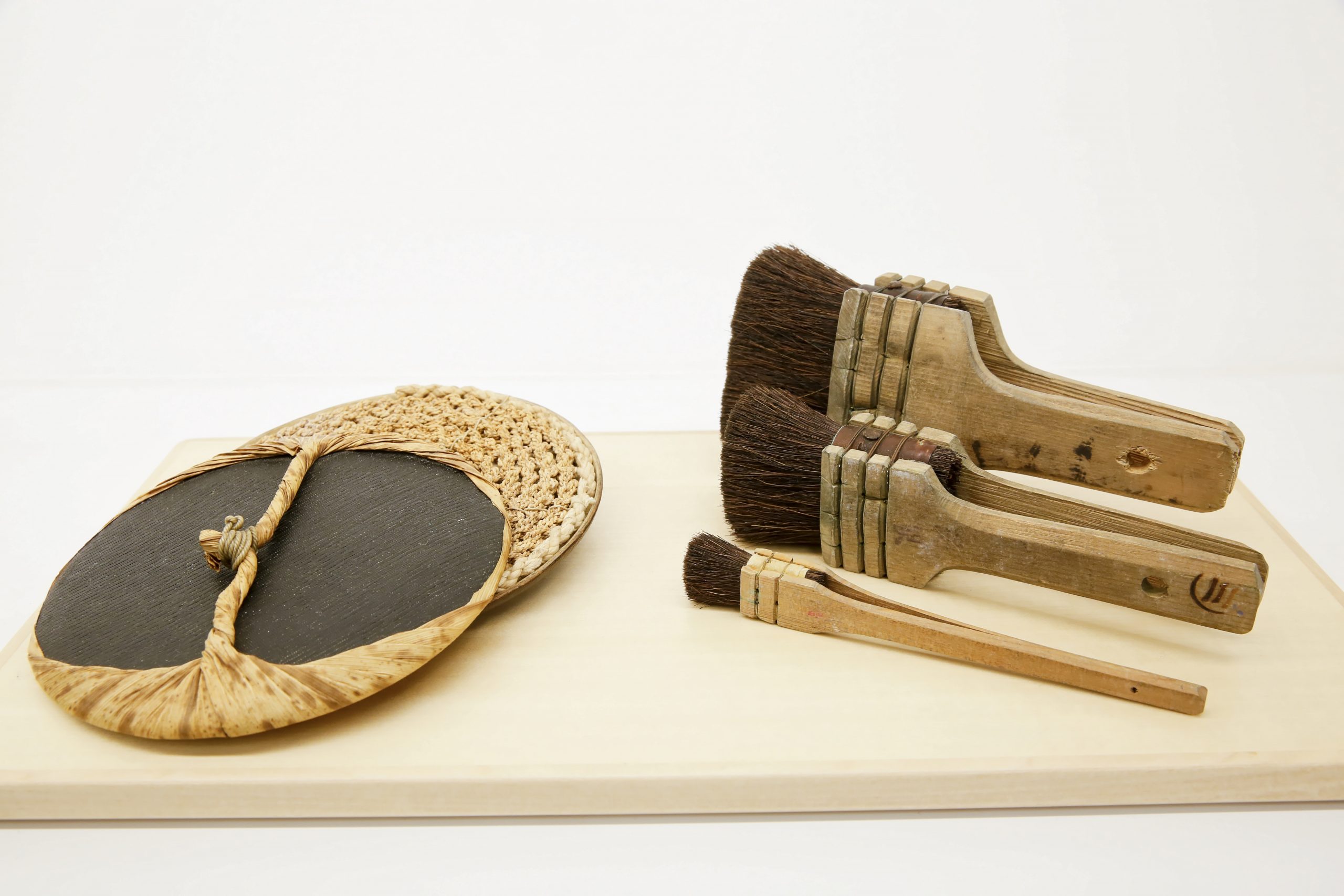
Woodblock printing tools displayed in the NATURE/SUPERNATURE exhibition
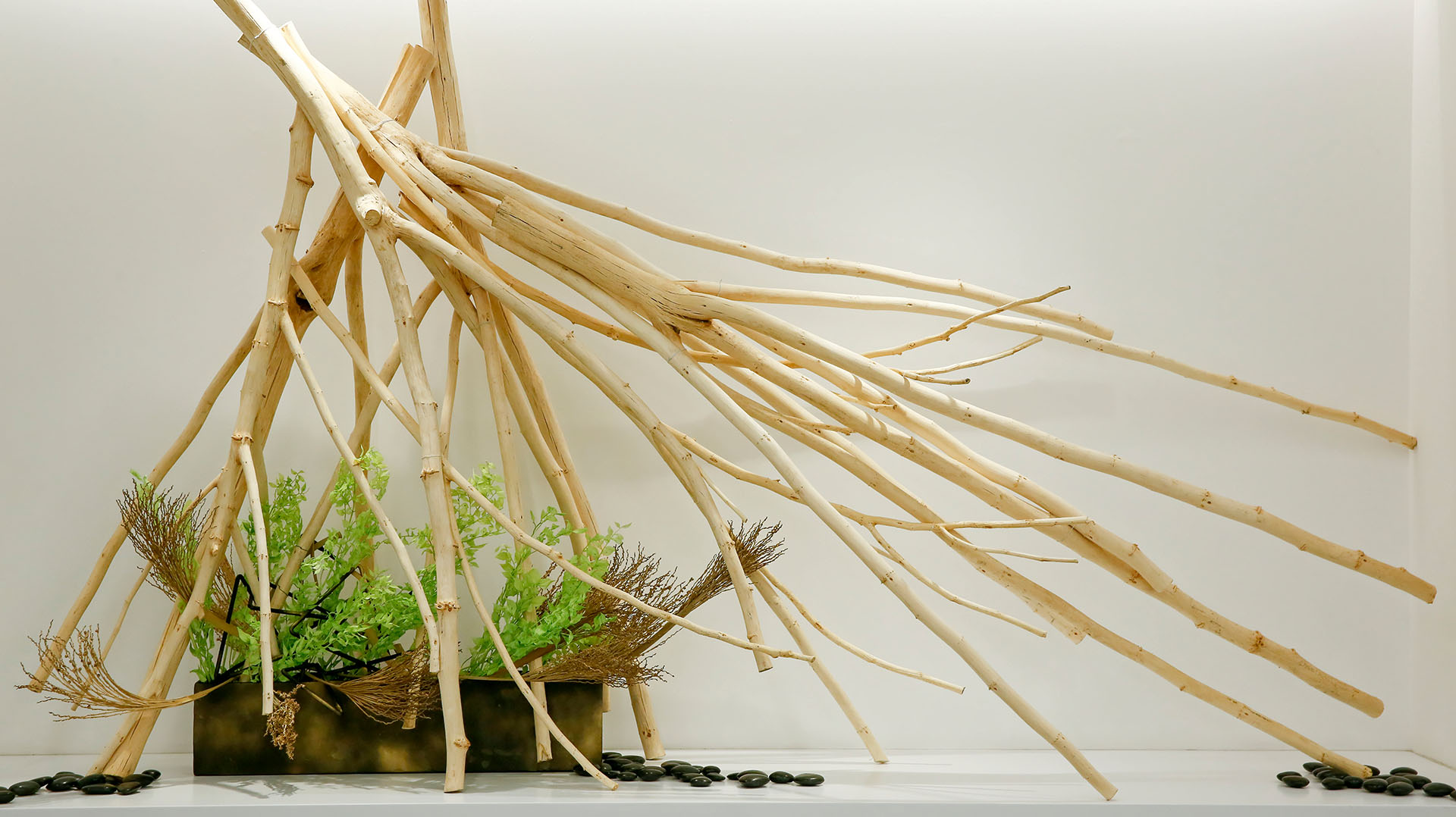
Arrangement by Kaz Kitajima, of the Sogetsu School, inspired by Hokusai’s print Kirifuri Waterfall


